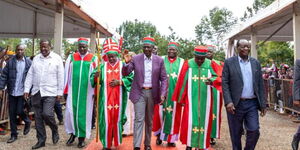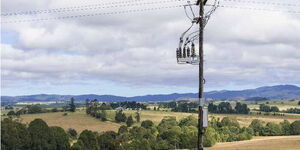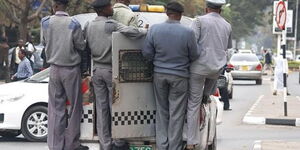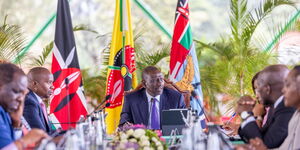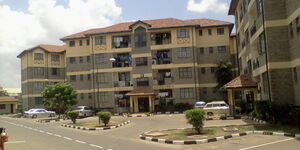Turkana County, a region long perceived as marginalised, is now poised to become the cornerstone of Kenya's ambitious mining sector growth.
In a strategic move to elevate the mining sector's contribution from the current 1 per cent to over 10 per cent of the Gross Domestic Product (GDP) by 2030, the government has set its sights on the mineral-rich expanses of Turkana.
President William Ruto's government seeks to inject Ksh1.6 trillion into the country’s coffers through the harnessing of the untapped potential of one of Kenya’s most resource-laden areas, transforming it into an economic powerhouse.
Turkana's landscape, often seen as barren and desolate, conceals a treasure trove of minerals that span across various categories. These include; precious stones like rubies, sapphires, and garnets; construction minerals such as asbestos, silica, and gypsum; and strategic minerals including chromite and coltan.
Additionally, the county is home to radioactive elements such as samarskite and pitchblende, the latter falling under the uranium class. This diverse mineral wealth positions Turkana as a key player in Kenya’s economic transformation.
Mining Cabinet Secretary Salim Mvurya, announced the transformative potential of Turkana's mineral reserves.
"The minerals in Turkana County can trigger unprecedented growth in the region. With the right environment, we can promote sustainable exploitation that will benefit both the local community and the national economy," he stated during a recent visit to the county.
Turkana County's population of 926,976, as per the 2019 census, stands to gain significantly from the structured exploitation of these resources.
The presence of over 21 high-value minerals provides a solid foundation for economic upliftment, promising to eclipse other sectors and establish mining as the primary economic driver in the region.
County Director of Mineral Resources, Stanley Loter, describes Turkana as a "virgin treasure trove," emphasising the hidden economic opportunities waiting to be tapped.
During a high-profile delegation visit to Turkana, CS Mvurya, accompanied by Principal Secretaries Elijah Mwangi (Mining), Betsy Njagi (Blue Economy), and Geoffrey Kaituko (Maritime Affairs), highlighted the potential benefits of a collaborative effort between the national and county governments.
"We are working with the county to exploit mining potential. With the Artisanal Mining Committee in place, we can issue licenses and monitor operations to ensure investors pay royalties that will be distributed to residents," Mvurya explained.
Joseph Ekiru, the Chairperson of Turkana County Artisanal Miners, is optimistic about the future. "This mineral giant is awakening. The minerals will become the ultimate gamechanger for growth and progress for this county," he remarked. Ekiru’s sentiment is echoed by extensive mineral data, which shows a widespread distribution of valuable minerals across Turkana.
Areas such as Nadapal and Lokitang are rich in gold, while blue sapphires can be found in Kaeris and Malpus. Kaputirr is known for red and green garnets, and the presence of graphite, a high-value mineral used in battery manufacturing, adding another layer of economic potential.
The Mining Act, 2016 provides a framework for sharing royalties from mining activities, allocating 70 per cent to the national government, 20 per cent to the county government, and 10 percent to the local community. This tripartite formula ensures that the benefits of mining are distributed equitably, fostering development at multiple levels.
In December last year, mineral-rich counties were slated to receive a financial boost following the government’s allocation of Ksh2.9 billion for disbursement as mining royalties. These funds, set aside in the 2023/24 financial year, are intended to supplement the counties' equitable share of revenue from the exchequer, enhancing their financial capacity to support local development initiatives.
The government revenue in Kenya for the fiscal year 2022/2023 accumulated to some Ksh2.38 trillion, and a further injection of Ksh1.6 trillion could stop the government from excess borrowing to meet budgetary shortfalls.

